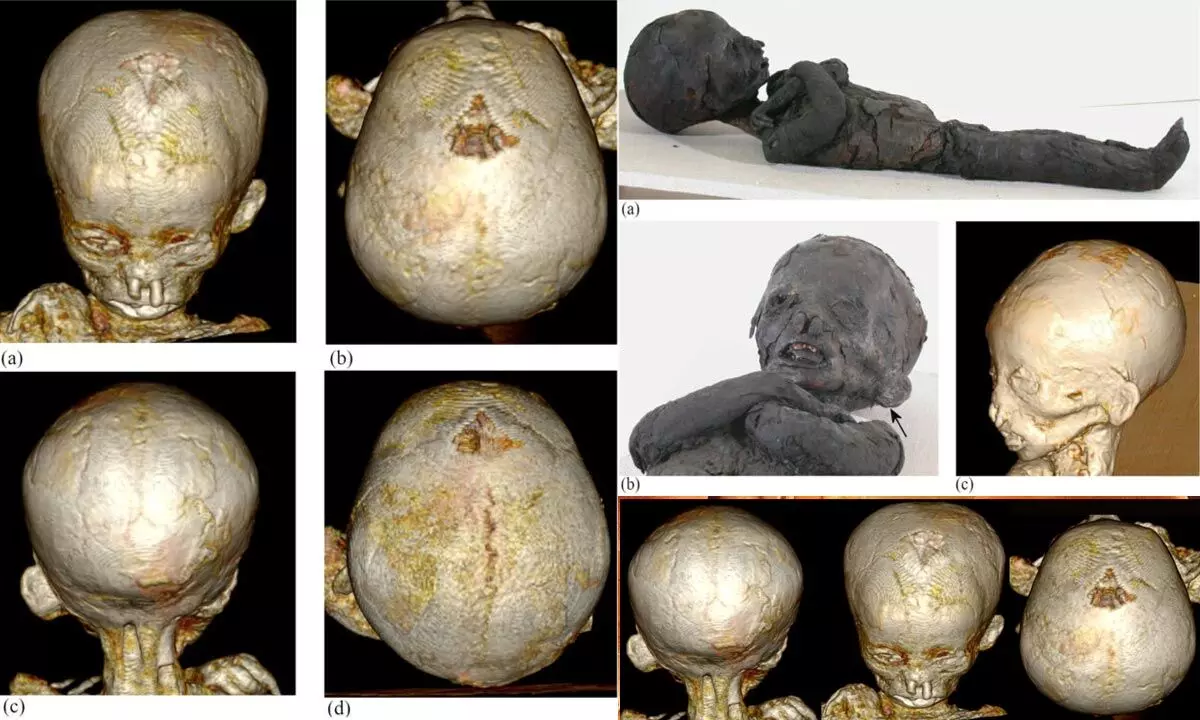Just In
High Prevalence Of Anemia Found In Child Mummies Of Egypt


3D reconstruction of the skull of one of the children. (Panzer et al., International Journal of Osteoarchaeology, 2023)
- A recent study that examined infant mummies in European museums discovered that anemia was prevalent among mummified ancient Egyptian youngsters.
- The research team stated that their work appears to be the first to demonstrate radiological findings in an ancient Egyptian child mummy that indicate thalassemia
A recent study that examined infant mummies in European museums discovered that anemia was prevalent among mummified ancient Egyptian youngsters. Researchers observed that one-third of the mummies had symptoms of anemia; they also uncovered evidence of thalassemia in one case using computed tomography (CT) scans, which allowed them to look inside the mummies' dressings without having to remove them.
Ancient individuals who were mummified had bodies that were more information-richly preserved than those who were buried. Researchers frequently use scans to 'see' through the wrappings and examine what's inside, despite the fact that modern science does not allow them to remove the wrappings used in the mummification process.
Furthermore, the scientists discovered that 7 of the 21 child mummies they evaluated in Swiss, German, and Italian museums displayed detectable anaemia symptoms, notably an enlarged frontal cerebral vault.
Additionally, the dead youngsters who were mummified ranged in age from 1 to 14 years old and lived through several eras. Even though this discovery is sad, ancient Egyptian mummified remains have undoubtedly uncovered some fascinating information about their lives and deaths. A small-scale study like this has limitations even though it advances our understanding.

© 2024 Hyderabad Media House Limited/The Hans India. All rights reserved. Powered by hocalwire.com






